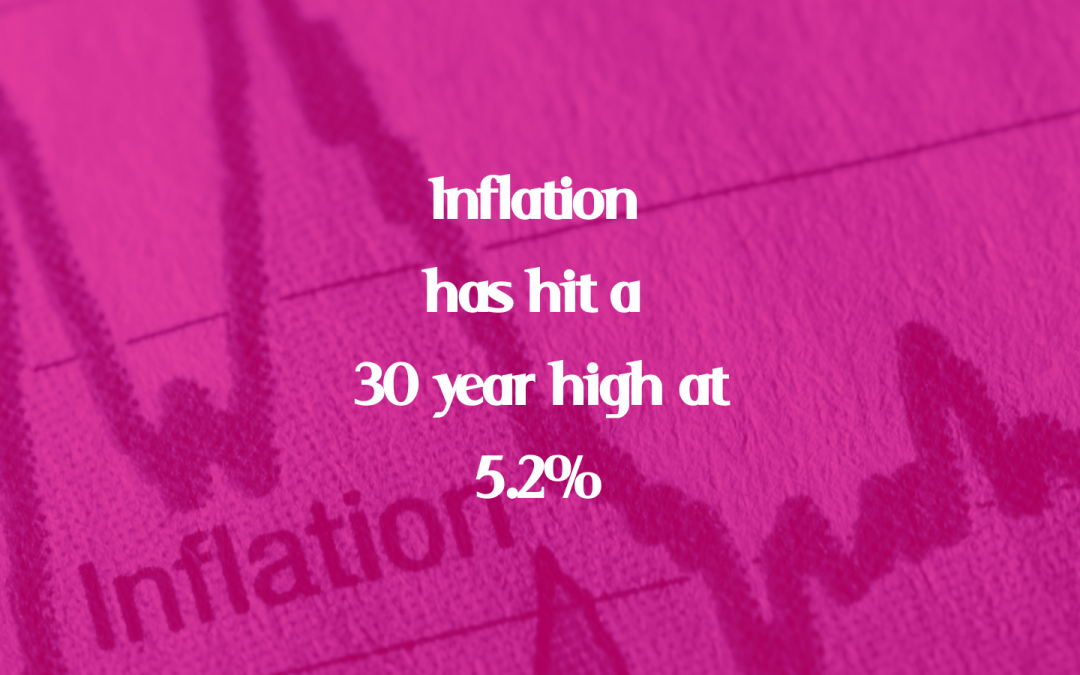What is it and how is it measured?
As a quick reminder, inflation is measured by the increase in the cost of a collection of typical household goods and services, when compared with the same month a year before.
The services and items included change as our lifestyles change, for instance the most recent measure included hand sanitiser and men’s loungewear bottoms, but removed sandwiches bought at work. It aims to be representative of our lifestyles.
The simplest example of inflation at work is in the cost of a loaf of bread, costing £1.00 in January 2021, now costing £1.05 in January 2022. This would represent 5% inflation on this item. Other items may have also risen in price at different rates, or even fallen in price over the same period, so it is a combination of all items measured which provides the headline figure.
Why is it going up?
All major economies around the world are currently grappling with rising inflation, it isn’t just us in the UK. This rise is mainly driven by a mismatch in supply and demand on a lot of items.
The supply issue is mainly caused by the shutdown of factory production during the various lockdowns the world has faced. You will have no doubt heard about shortages for one thing or another; cars, boilers and computer chips to name a few. In addition, energy prices are rising rapidly for a variety of reasons, which are not covid-related, and this has a big bearing on inflation figures because we all collectively spend so much of our income on energy.
Demand has been artificially inflated by governments through measures like furlough payments and VAT reduction for certain industries, meaning more money is available to people and businesses than otherwise would be the case following an economic downturn, like the one we had last year.
On top of this, we are being hit particularly hard in Britain because of Brexit, where supply chains are more strained due to a more difficult trading relationship within the EU.
How will this affect me?
Quite simply, the cost of living is going up and, all things being equal, our money won’t go as far as it did last year.
Will it come down again?
It was not unexpected that inflation was going to come back up at some point, in doing so it is simply part of the ebb and flow of the economy and personal finance.
Inflation has only touched 3% a couple of times in the last 10 years, with it being below this at all other times. Before this, inflation had been far higher for longer periods of time.
This recent history should provide confidence that the central banks around the world understand how to get inflation back under control and will make all efforts to do so. It is a big focus of theirs right now and will be until it is back to more reasonable levels.
The good news on this front is that most economists, including the Bank of England, think this inflation spike will be temporary and that it should reduce at the end of 2022, and then fall further again in 2023. These are only forecasts, so shouldn’t be taken as gospel, however it provides cause for optimism that this is a short-term bump in the road.
What can I do in the meantime?
Whilst our advice depends on your circumstances, for most people it will be a case of riding this out, in the knowledge that it will come back down again.
If you are a Magenta client, you’ll be aware that you have an assumption about the level on inflation built into your financial plan. Whilst the current level of inflation is higher than that assumed in your plan, it should drop back down again to something much closer to the assumed level.
However, if you are a client of ours and are feeling the pinch or are concerned about inflation and would like to talk to us about your options, please do get in touch.
If you’re not a Magenta client and want to better understand how you can protect your savings against inflation, or want to understand how you can generate income to help with the cost of living, do get in touch and we’d be happy to talk this through with you.

